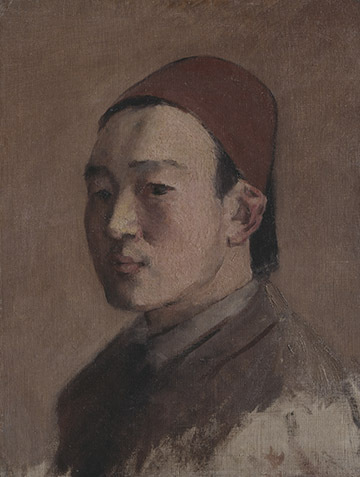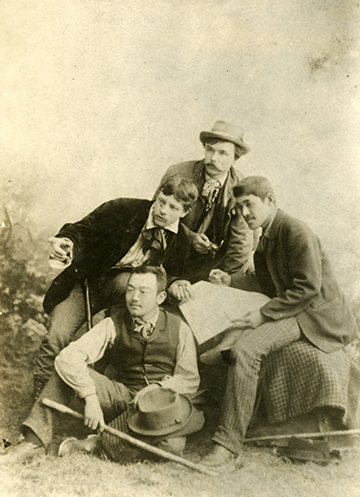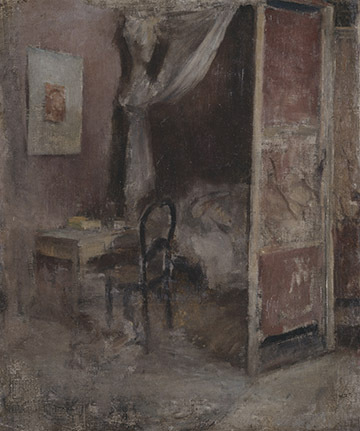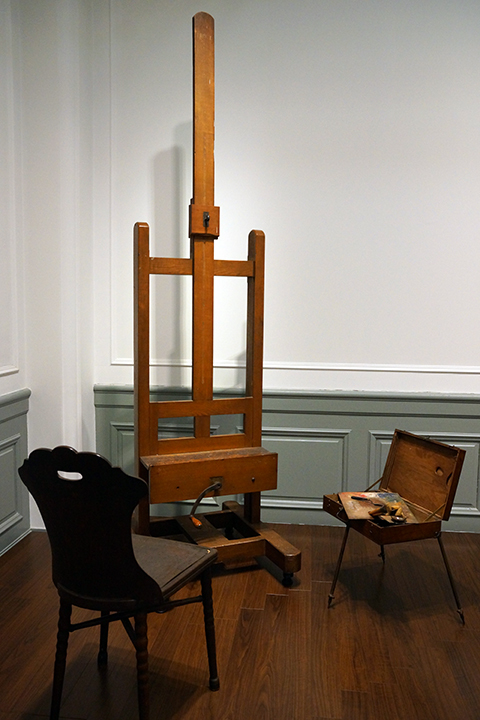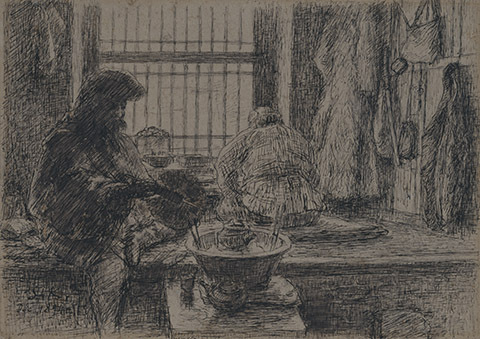
Jun Shioya, a researcher at the Tokyo National Research Institute for Cultural Properties

Minako Miyao, a staff member at Public Relations Office, Tokyo National Museum
We talked with Jun Shioya, a researcher at the Tokyo National Research Institute for Cultural Properties, and Minako Miyao, a staff member at Public Relations Office, Tokyo National Museum. This interview was conducted in July 2016.
Foundation of Kuroda Memorial Hall
Q: In what circumstanceswas Kuroda Memorial Hall founded?
Shioya: This hall was built as an art institute that was predecessor of the Tokyo National Research Institute for Cultural Properties. The art institute was established according to the wishes of Seiki Kuroda who was called "the father of modern Japanese Western-style painting." Kuroda who died in 1924 expressed his dying wish that a part of his bequest should be made use of for Japanese art circles. Responding to his wish, Yukio Yashiro, an art researcher who had a profound knowledge of the Italian art, proposed founding an art library and institute, so it was founded in 1930. The main building was built in 1928. In commemoration of Kuroda's achievements, the Kuroda memorial room was set up, and his paintings are now exhibited in the room. (continued in the right column)


A room Kuroda lived in at that time, which was located at Vaugirard Street, Paris


About the Kuroda memorial room
Q: Could you introduce the Kuroda memorial room?
Architectural styles of museums in 1920s and 1930s are reflected in forms and ornaments arranged in the Kuroda memorial room. The main building of Kuroda Memorial Hall was designed by Shinichiro Okada who was a professor at Tokyo Fine Arts School at which Kuroda also taught. It is said that Okada had a thorough knowledge of architectural histories of all ages and countries. Okada also designed the Kabukiza Theater and the Meiji Seimei Kan. The main building is faced with striped tiles that were popular when it was built. The Greek temple-style columns are installed at the front entrance, following the Western classical architecture. Although many museums have currently adopted the "white cube" style in which entire walls are painted white, wainscots are attached to the interior walls of Kuroda Memorial Hall following architectural styles of museums at that time. Another characteristic is that skylight windows are set at the ceiling, through which natural light came in. Ornaments attached to the windows are also excellent. Although, at first, natural light entered into the rooms, lighting apparatuses are now installed considering an impact on exhibits.
Q: Could you explain about exhibits?
This easel was used by Kuroda. In a picture of his studio shot around 1907, Kuroda and this easel can be seen. Exhibits in the memorial room are periodically changed so that visitors can see his paintings and drawings chronologically. Now art works created when he stayed in France and after he returned home are exhibited. For example, this painting titled "A Nap" was created when he rediscovered Japanese customs after coming back to Japan. One of Kuroda's missions was to have Western art take root in Japan. He tried to achieve the goal by expressing Japanese customs with Western techniques. However, he was appointed to a variety of important posts since the end of the Meiji Period, so compared to other artists, he was not prolific, and most of the paintings he created in his later years are small. (continued in the lower column)

Q: There are some drawings he made during the time of the Sino-Japanese War. Did he go to the front?
He served in the Sino-Japanese War, but stayed in the rear as a war correspondent and depicted soldiers' daily lives. According to his diary, in order to depict battles, he went to battlefields after battles were finished and interviewed soldiers. (continued in the lower column)

Q: Did he usually make drawings outdoors? How many sketchbooks are left?
There are about 30 sketchbooks. Although there are some pictures in which Kuroda put an easel outdoors and made paintings, I think, in most cases, he drew sketches outdoors, and then made oil paintings in his studio.(continued in the next page)

Jun Shioya, a researcher at the Tokyo National Research Institute for Cultural Properties

Minako Miyao, a staff member at Public Relations Office, Tokyo National Museum











